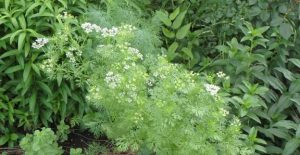Tips on growing cilantro

The world of herbs is pretty amazing because of the many flavors they bring by exciting our taste buds. I have used herbs for years in many recipes that gave that WOW. Besides, their great taste herbs are filled with vitamins and benefit us in so many ways.
In this article, we will be looking at the world of cilantro and how to grow and care for them. Cilantro is known worldwide, these herbs are used in abundance in Asain and Mexican dishes.
Successfully Growing Cilantro
Cilantro can be started indoors and out if starting indoors seed trays should be placed in an area that gets sunlight. Using organic soil is an added benefit and will do wonders for your herbs. If planting herbs outdoors look for an area that gets lots of sunlight. The soil ph of cilantro can be anywhere from 6.2-6.8
Again using organic soil is key. Plants should be placed 4-6 inches apart, the planting hole should be 1-1/2 inches deep. Properly cover the hole and water thoroughly.
Watering methods
Don’t allow the soil to dry out, and don’t overwater. Keep soil moist.
Fertilizing methods
Fertilize twice during the growing season with 34-0-0 or 5-1-1. This will help your cilantro to perform at its best.
Pests of cilantro
Keep an eye out for these pests that seek to make a meal of your cilantro. Following these steps will ensure success.
1. Armyworms- young larvae are pale yellow to green. These larvae are heavy feeders and will cause serve destruction. The older larvae are dark green with a dark and light line along the sides of their bodies. Control with Bacillus thuringiensis.
2. Aphids- are pared shape soft body insects that are yellow and green. These insects can be found on the underside of leaves or the tender regions or young growth of plants.
Aphids infect plants by sucking plant juice which causes the leaves to turn yellow, brown, and fall off. Aphids also secrete a sugary substance known as honeydew that causes black molds to form on leaves know as sooty mold. This honeydew also attracts ants that feed on it.
Control aphids with a strong spray of water or using insecticidal soap or oil sprays from your garden center.
3. Cutworms- larvae are also responsible for the destruction of cilantro. These larvae are active during the nighttimes but hide in the soil during the day. Larvae will curl up in a C-shape when disturbed, they have various colors and patterns.
Control these insects by crop rotation and applying insecticides that are labeled to eliminate these pests.
Nematode control
4. Root-knot nematodes are responsible for gall rot which causes herbs to turn yellow and wilt in hot weather. Control measures include planting resistant varieties. Soil solarizing is also effective in controlling nematodes, soil-inhabiting insects along weed seeds.
Diseases of cilantro
Cilantro has its share of disease, the good news, however, is by putting these steps in place will ensure success.
Control measures
1. Powdery mildew- is caused by a fungus that appears as a white powdery mass that covers the leaf surface causing plant leaf to turn yellow, flowers may also become distorted.
Avoid over-fertilizing, install varieties that can tolerate this fungus also using fungicides labeled to treat this fungus has proven to be effective.
2. Bacterial leaf spot- Appears as soak water spots between leaf vein. As the disease progress, leaf veins swell turning dark brown to black. Plant stems have dark streaks turning yellow and brown. This disease spreads by infected seeds, rain, and irrigation water. Plant disease-free seeds and avoid overhead irrigation.
3. Damping-off- is brought on by a fungus that causes the seeds to turn soft begins to rot and will not germinate. Seedlings that do germinate die as soon as they emerge from the soil. The rot of these steams takes place at the soil line.
Treating seeds with fungicides, planting seeds that are healthy, and avoiding soils that have poor drainage will help to establish your plants.
Harvesting cilantro
When cilantro reaches maturity cut about one third from the top this one third from the top is your harvest. The part of the cilantro remaining in the ground will regrow or germinate new leaves. Cilantro can be harvested every 1-2 weeks depending on the rate of growth.
The final word
Cilantros are not hard to grow and care for it is all a matter of knowing what to do and you will be well on your way to reaping a good harvest. So consider making these herbs a part of your home garden and receive all the benefits cilantro has to offer.
About the author
Norman loves being in the garden, both at home and for his job....
he is 'Natures Little helper' being outdoors, growing his vegetables and flowers from an early age.
Now having spent over 22 years in the profession he want to give some of his knowledge to others...
his vast array of hints and tips you will find scattered over this site will help you no end growing plants in your garden.
